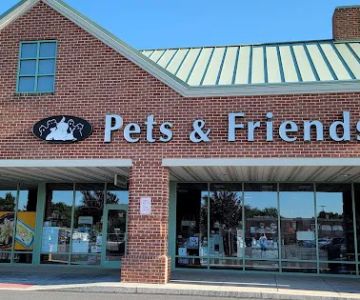How to Keep Your Pet’s Environment Safe: Creating a Secure Space for Your Furry Friends
- Why Pet Safety Is Important
- Creating a Safe Home Environment for Your Pet
- Common Hazards for Pets and How to Avoid Them
- Ensuring Your Pet’s Safety Outdoors
- Keeping Your Pet Healthy and Secure in Their Environment
Ensuring your pet’s environment is safe is crucial for their well-being and happiness. As a pet owner, it’s your responsibility to create an environment where your furry friend can thrive, feel comfortable, and remain free from harm. Just like humans, pets need a space where they are protected from potential dangers, whether indoors or outside. A safe environment promotes physical and mental health and strengthens the bond between you and your pet.
In this article, we will explore how to keep your pet’s environment safe, covering everything from creating a safe home space to preventing common hazards and ensuring outdoor safety. We’ll also share useful tips and practices to maintain a secure environment that fosters your pet’s happiness and health.
Creating a Safe Home Environment for Your Pet
The first step in keeping your pet safe is ensuring that your home is a secure environment. Whether you have a dog, cat, rabbit, or any other type of pet, your home should be their sanctuary. Here are some key considerations when setting up a safe environment for your pet:
1. Pet-Proofing Your Living Space
Pet-proofing your home is similar to childproofing. You need to remove any dangerous items that could harm your pet. For instance, secure cords and electrical outlets, remove toxic plants (like lilies for cats), and ensure that small objects, like rubber bands or small toys, are out of reach. This process can also include keeping cleaning supplies, chemicals, and medications in secure cabinets that your pet cannot access.
2. Safe Spaces for Rest
Provide your pet with a designated, comfortable, and quiet space where they can rest and feel secure. For dogs, this could be a bed in a corner of the room; for cats, it might be a high perch or cozy spot near a window. Having their own space helps pets feel more at ease, reducing stress and anxiety. For small animals like rabbits or guinea pigs, a cage or secure enclosure with bedding is necessary to provide a safe environment.
3. Secure Furniture and Appliances
Ensure that your furniture and appliances are stable. Pets, especially young ones or those who are naturally curious, may try to jump on counters or knock things off tables. Keep fragile items out of their reach and make sure large items, like TVs or bookshelves, are anchored to prevent tipping. This is especially important for pets that may try to climb or explore high places.
Common Hazards for Pets and How to Avoid Them
There are many hazards that can be present in everyday home environments, and it’s crucial to be aware of them to prevent accidents or injury. Here are some of the most common dangers for pets and tips on how to mitigate them:
1. Toxic Foods and Plants
Many household foods are toxic to pets, including chocolate, grapes, onions, and alcohol. Certain plants, such as poinsettias, azaleas, and ivy, can also be poisonous to animals. Keep these items out of reach, and be aware of common foods and plants that can harm your pets. For example, consider keeping food off counters and using pet-friendly plants to decorate your home.
2. Small Objects and Toys
Small toys or household objects that are easily swallowed can pose a serious choking hazard. This is particularly important for pet owners with young pets or those that are prone to chewing. Always check that toys are the right size for your pet and avoid giving them objects that can break into small parts. Additionally, avoid using toys with detachable pieces that your pet could swallow.
3. Household Cleaning Products
Many cleaning products contain chemicals that can be harmful to pets if ingested or if they come into contact with the skin. Always store cleaning products in locked cabinets and choose pet-safe cleaning solutions whenever possible. After cleaning, ensure the area is dry and free of any residue before allowing your pet to enter.
Ensuring Your Pet’s Safety Outdoors
While keeping your pet safe indoors is essential, ensuring their safety when outdoors is just as important. Whether your pet spends time in your backyard or enjoys walks in the park, outdoor safety is a critical part of their overall well-being. Here are some tips for outdoor safety:
1. Fencing and Enclosures
If you allow your pet to roam freely in the yard, make sure the area is securely fenced. This prevents your pet from running off or coming into contact with dangerous wildlife or traffic. Ensure there are no gaps or weak spots where your pet could escape. For smaller pets, such as rabbits or guinea pigs, consider using secure enclosures to prevent escape.
2. Leash and Supervision
When walking your dog, always use a leash to keep them under control and prevent them from running into unsafe situations, such as oncoming traffic or wildlife. Even in fenced areas, it’s essential to supervise your pet to prevent them from getting into dangerous situations, like chewing on toxic plants or getting too close to roads.
3. Outdoor Hazards
Outdoor environments can present several hazards, such as poisonous plants, wildlife, or extreme weather conditions. Make sure to check your yard for any plants or substances that could harm your pet and keep them safe from harsh weather. In hot weather, ensure your pet has plenty of fresh water and shade, and during winter, be mindful of salt and ice, which can irritate their paws.
Keeping Your Pet Healthy and Secure in Their Environment
A safe environment goes hand-in-hand with maintaining your pet’s health. Regular veterinary care, a balanced diet, and daily exercise contribute to your pet’s well-being and help keep them happy in a safe space. By maintaining a secure environment and staying proactive about their health, you can help your pet lead a long and healthy life.
Regular veterinary visits are essential to monitor your pet’s health and address any potential issues. Vaccinations, parasite prevention, and wellness check-ups should all be part of your pet’s routine care. For advice on how to create the best environment for your pet, consider visiting a trusted veterinary clinic like Hidden Brook Veterinary, where experts can guide you on how to optimize your pet’s living space and care.
Creating a safe, secure, and healthy environment for your pet is vital for their well-being. By being proactive, aware of common hazards, and ensuring that both your home and outdoor areas are pet-friendly, you can ensure that your furry friends live happy, healthy, and safe lives.











